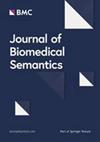Disjunction Triggers Exhaustivity Implicatures in 4- to 5-Year-Olds: Investigating the Role of Access to Alternatives
IF 2
3区 工程技术
Q3 MATHEMATICAL & COMPUTATIONAL BIOLOGY
引用次数: 5
Abstract
Children’s difficulty deriving scalar implicatures has been attributed to a variety of factors including processing limitations, an inability to access scalar alternatives, and pragmatic tolerance. The present research explores the nature of children’s difficulty by investigating a previously unexplored kind of inference—an exhaustivity implicature that is triggered by disjunction. We reasoned that if children are able to draw quantity implicatures but have difficulties accessing alternative lexical expressions from a scale, then they should perform better on exhaustivity implicatures than on scalar implicatures, since the former do not require spontaneously accessing relevant scalar alternatives from the lexicon. We conducted two experiments. Experiment 1 found that 4- to 5-year-olds consistently computed exhaustivity implicatures to a greater extent than scalar implicatures. Experiment 2 demonstrated that children are more likely to compute exhaustivity implicatures with disjunction compared to conjunction. We conclude that children often fail to derive scalar implicatures because (1) they struggle to access scalar alternatives and (2) disjunction (but not conjunction) makes subdomain alternatives particularly salient. Thus, the findings suggest that exhaustivity implicatures can be derived without reference to a scale of alternatives.4- 5岁儿童的分离触发穷竭性含义:调查获得替代方案的作用
儿童难以得出标量含义归因于多种因素,包括处理限制、无法获得标量替代品和实用容忍。目前的研究通过调查一种以前未被探索的推理——由分离引发的穷尽性含义——来探索儿童困难的本质。我们推断,如果儿童能够绘制数量含义,但难以从尺度中获取替代词汇表达,那么他们在穷竭含义上的表现应该比在标量含义上的表现更好,因为前者不需要自发地从词汇中获取相关的标量替代。我们做了两个实验。实验1发现,4 ~ 5岁儿童计算穷竭性蕴涵的一致性高于标量蕴涵。实验2表明,与连接相比,儿童更有可能计算分离的耗尽性含义。我们得出的结论是,儿童经常不能推导标量含义,因为(1)他们很难获得标量替代品,(2)析取(但不是合取)使子领域替代品特别突出。因此,研究结果表明,穷竭含义可以不参考替代方案的规模而推导出来。
本文章由计算机程序翻译,如有差异,请以英文原文为准。
求助全文
约1分钟内获得全文
求助全文
来源期刊

Journal of Biomedical Semantics
MATHEMATICAL & COMPUTATIONAL BIOLOGY-
CiteScore
4.20
自引率
5.30%
发文量
28
审稿时长
30 weeks
期刊介绍:
Journal of Biomedical Semantics addresses issues of semantic enrichment and semantic processing in the biomedical domain. The scope of the journal covers two main areas:
Infrastructure for biomedical semantics: focusing on semantic resources and repositories, meta-data management and resource description, knowledge representation and semantic frameworks, the Biomedical Semantic Web, and semantic interoperability.
Semantic mining, annotation, and analysis: focusing on approaches and applications of semantic resources; and tools for investigation, reasoning, prediction, and discoveries in biomedicine.
 求助内容:
求助内容: 应助结果提醒方式:
应助结果提醒方式:


